介紹在嵌入式Linux下完成倒車影像小項目的流程,學(xué)習(xí)PWM驅(qū)動蜂鳴器,編寫超聲波驅(qū)動,讀取壁障距離,讀取攝像頭的畫面實時顯示。
倒車影像項目
模擬: 汽車中控臺---倒車影像。
組成部分:
【1】LCD屏: 實時顯示攝像頭采集的數(shù)據(jù)。
【2】攝像頭: 放在車尾,采集圖像傳輸給LCD屏進(jìn)行顯示。
【3】 倒車?yán)走_(dá): 超聲波測距--->測量車尾距離障礙物的距離。
【4】蜂鳴器: 根據(jù)倒車?yán)走_(dá)測量的距離,控制頻率。
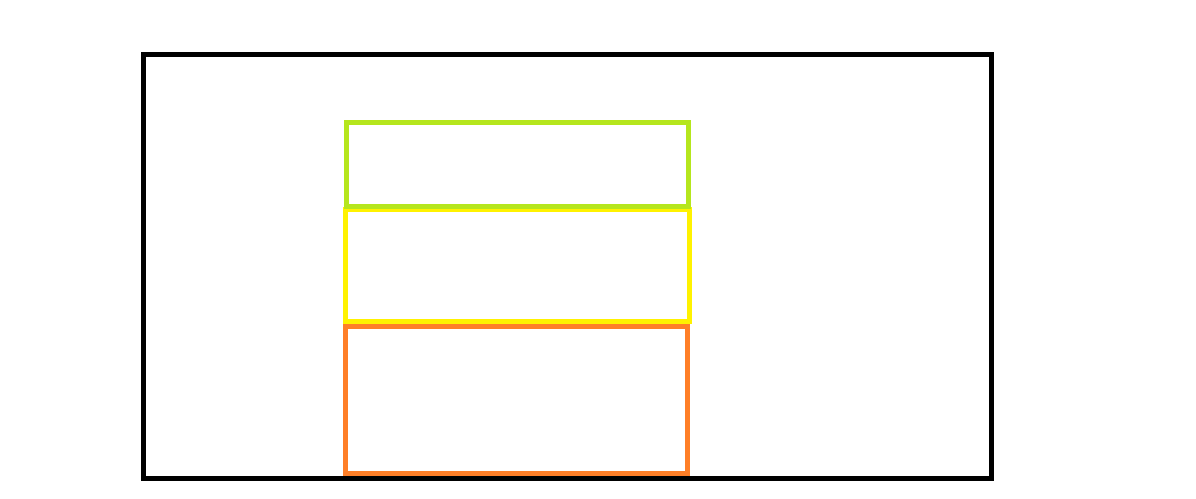
1.1 超聲波測距模塊
聲波測距: 已知聲音在空氣中傳播的速度。
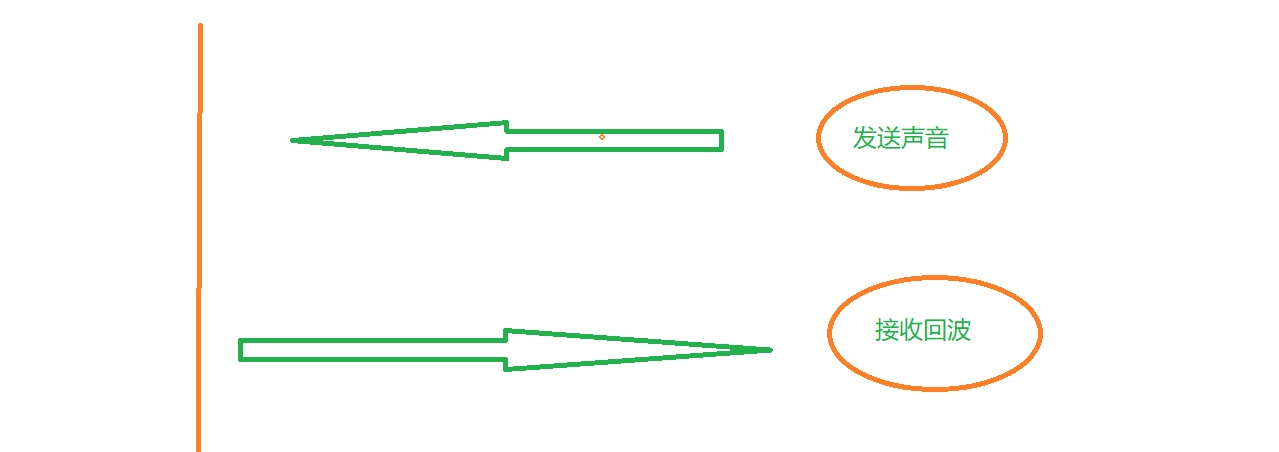
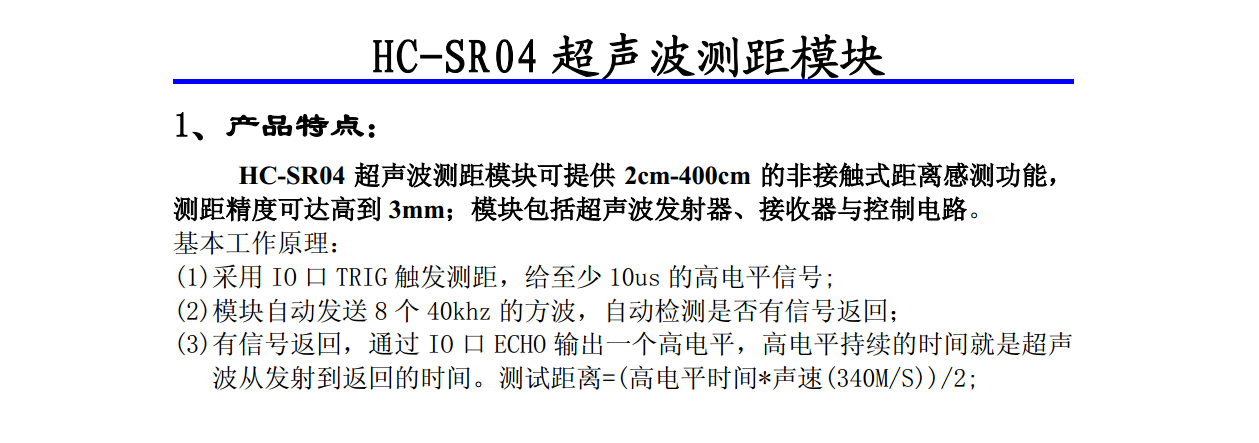
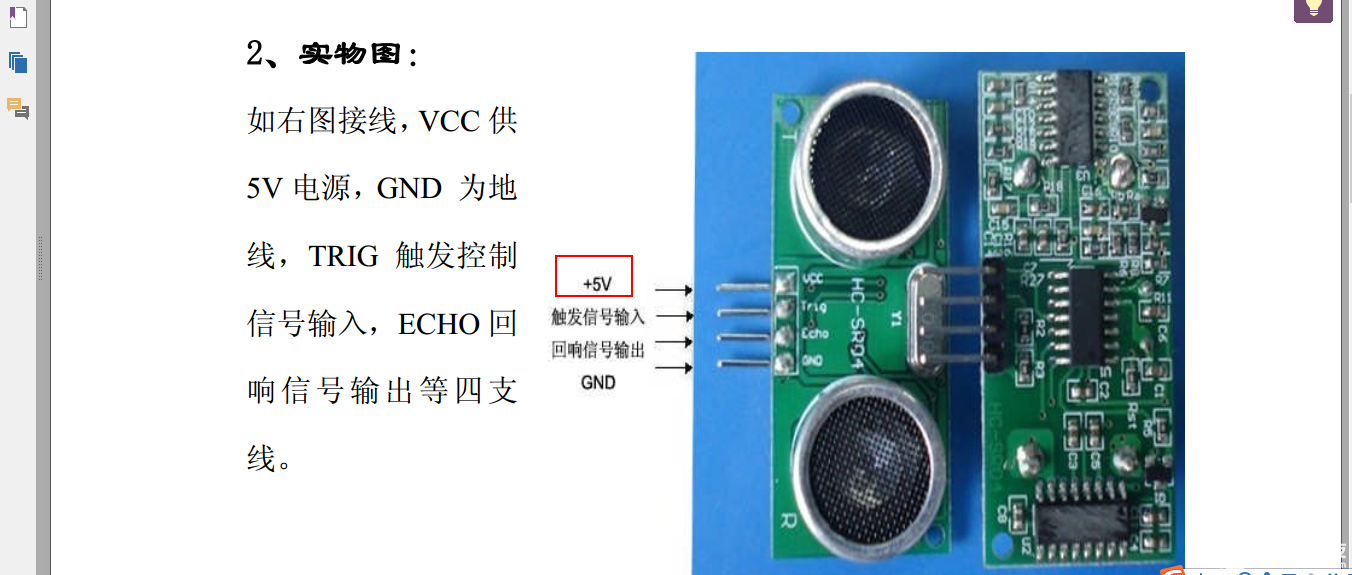
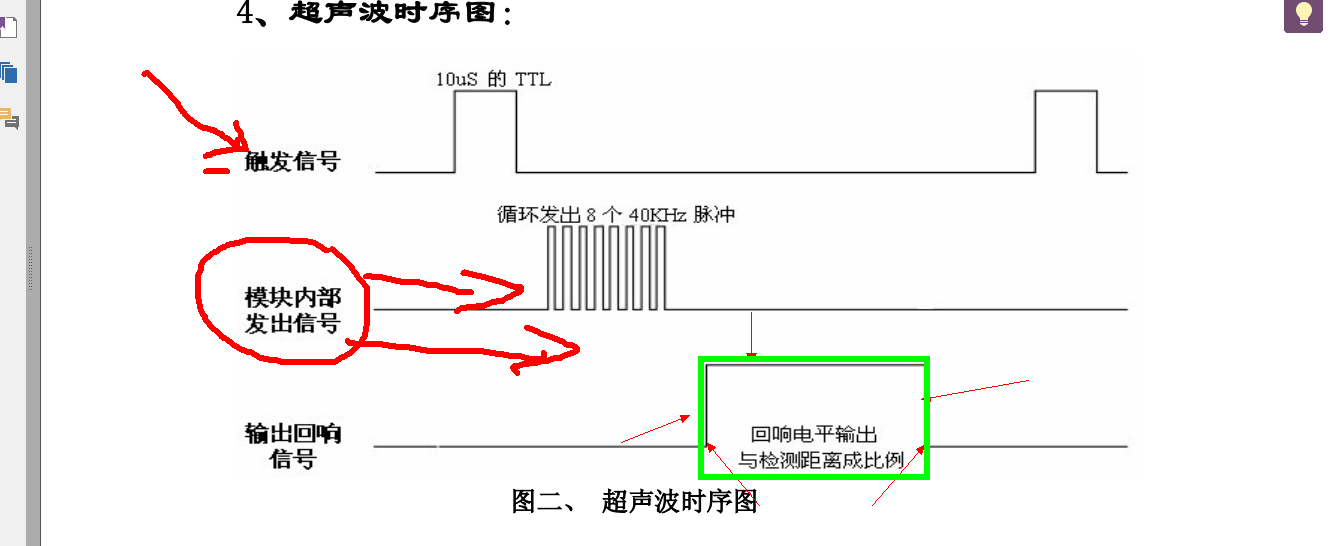
硬件接線:
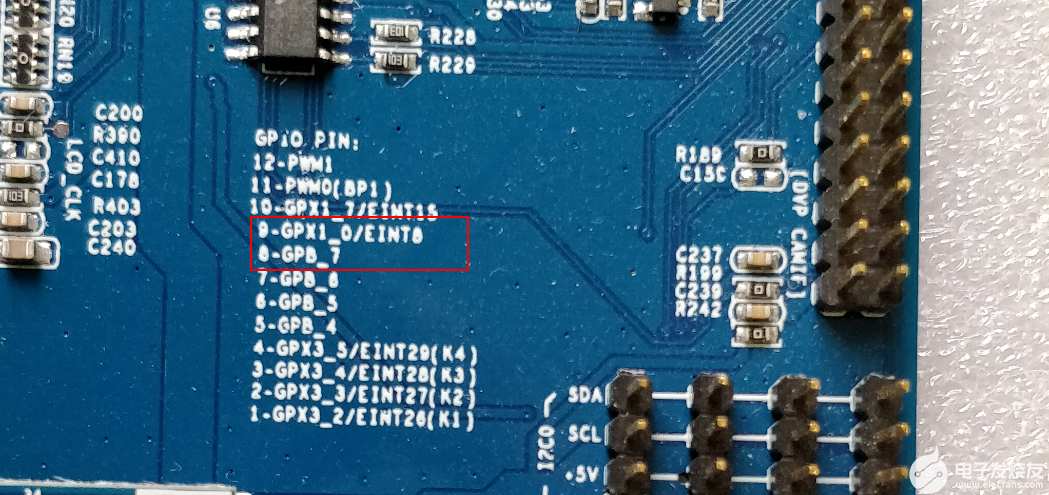
ECHO------->GPX1_0 (開發(fā)板第9個IO口): 中斷引腳----->檢測回波----輸入
TRIG ------->GPB_7 (開發(fā)板第8個IO口): 輸出觸發(fā)信號。
超聲波驅(qū)動讀取距離:
#include
#include
#include
#include
#include
#include
#include
#include
#include
#include
#include
#include
#include
#include
#include
#include
#include
#include
#include
static unsigned int distance_irq; /*存放中斷號*/
static u32 *GPB_DAT=NULL;
static u32 *GPB_CON=NULL;
static u32 distance_time_us=0; /*表示距離的時間*/
/*
工作隊列處理函數(shù):
*/
static void distance_work_func(struct work_struct *work)
{
u32 time1,time2;
time1=ktime_to_us(ktime_get()); /*獲取當(dāng)前時間,再轉(zhuǎn)換為 us 單位*/
/*等待高電平時間結(jié)束*/
while(gpio_get_value(EXYNOS4_GPX1(0))){}
time2=ktime_to_us(ktime_get()); /*獲取當(dāng)前時間,再轉(zhuǎn)換為 us 單位*/
distance_time_us=time2-time1;
//printk("us=%d\n",time2-time1); /*us/58=厘米*/
}
/*靜態(tài)方式初始化工作隊列*/
static DECLARE_WORK(distance_work,distance_work_func);
/*
中斷處理函數(shù): 用于檢測超聲波測距的回波
*/
static irqreturn_t distance_handler(int irq, void *dev)
{
/*調(diào)度工作隊列*/
schedule_work(&distance_work);
return IRQ_HANDLED;
}
static void distance_function(unsigned long data);
/*靜態(tài)方式定義內(nèi)核定時器*/
static DEFINE_TIMER(distance_timer,distance_function,0,0);
/*內(nèi)核定時器超時處理函數(shù): 觸發(fā)超聲波發(fā)送方波*/
static void distance_function(unsigned long data)
{
static u8 state=0;
state=!state;
/*更改GPIO口電平*/
if(state)
{
*GPB_DAT|=1<<7;
}
else
{
*GPB_DAT&=~(1<<7);
}
/*修改定時器的超時時間*/
mod_timer(&distance_timer,jiffies+msecs_to_jiffies(100));
}
static int distance_open(struct inode *inode, struct file *file)
{
return 0;
}
#define GET_US_TIME 0x45612
static long distance_unlocked_ioctl(struct file *file, unsigned int cmd, unsigned long argv)
{
u32 *us_data=(u32*)argv;
int err;
u32 time_us=distance_time_us;
switch(cmd)
{
case GET_US_TIME:
err=copy_to_user(us_data,&time_us,4);
if(err!=0)printk("拷貝失敗!\n");
break;
}
return 0;
}
static int distance_release(struct inode *inode, struct file *file)
{
return 0;
}
/*定義文件操作集合*/
static struct file_operations distance_fops=
{
.open=distance_open,
.unlocked_ioctl=distance_unlocked_ioctl,
.release=distance_release
};
/*定義雜項設(shè)備結(jié)構(gòu)體*/
static struct miscdevice distance_misc=
{
.minor=MISC_DYNAMIC_MINOR,
.name="tiny4412_distance",
.fops=&distance_fops
};
static int __init tiny4412_distance_dev_init(void)
{
int err;
/*1. 映射GPIO口地址*/
GPB_DAT=ioremap(0x11400044,4);
GPB_CON=ioremap(0x11400040,4);
*GPB_CON&=~(0xF<<4*7);
*GPB_CON|=0x1<<4*7; /*配置輸出模式*/
/*2. 根據(jù)GPIO口編號,獲取中斷號*/
distance_irq=gpio_to_irq(EXYNOS4_GPX1(0));
/*3. 注冊中斷*/
err=request_irq(distance_irq,distance_handler,IRQ_TYPE_EDGE_RISING,"distance_device",NULL);
if(err!=0)printk("中斷注冊失敗!\n");
else printk("中斷:超聲波測距驅(qū)動安裝成功!\n");
/*4. 修改定時器超時時間*/
mod_timer(&distance_timer,jiffies+msecs_to_jiffies(100));
/*雜項設(shè)備注冊*/
misc_register(&distance_misc);
return 0;
}
static void __exit tiny4412_distance_dev_exit(void)
{
/*5. 注銷中斷*/
free_irq(distance_irq,NULL);
/*6. 停止定時器*/
del_timer(&distance_timer);
/*7. 取消IO映射*/
iounmap(GPB_DAT);
iounmap(GPB_CON);
/*注銷雜項設(shè)備*/
misc_deregister(&distance_misc);
printk("中斷:超聲波測距驅(qū)動卸載成功!\n");
}
module_init(tiny4412_distance_dev_init);
module_exit(tiny4412_distance_dev_exit);
MODULE_LICENSE("GPL");
MODULE_AUTHOR("tiny4412 wbyq");
1.2 PWM方波控制蜂鳴器
PWM方波:



內(nèi)核自帶的PWM方波驅(qū)動

APP代碼:
#include
#include
#include
#define PWM_IOCTL_SET_FREQ 1
#define PWM_IOCTL_STOP 0
/*
主程序
*/
int main(int argc,char**argv)
{
int fb;
fb=open("/dev/pwm",2);
if(fb<0)
{
printf("pwm打開失敗!\n");
return -1;
}
ioctl(fb,PWM_IOCTL_SET_FREQ,100);
sleep(5);
ioctl(fb,PWM_IOCTL_STOP,0);
return 0;
}
1.3 UVC免驅(qū)攝像頭編程框架: V4L2
編程的框架: v4l2--->全稱: video4linux2
V4L2 : 針對UVC免驅(qū)USB設(shè)備設(shè)計框架。專用于USB攝像頭的數(shù)據(jù)采集。
免驅(qū) : 驅(qū)動已經(jīng)成為標(biāo)準(zhǔn),屬于內(nèi)核自帶源碼的一部分。
V4L2框架本身注冊的也是字符設(shè)備,設(shè)備節(jié)點: /dev/videoX
V4L2 框架: 提供ioctl接口,提供了有很多命令,可以通過這些命令對攝像頭做配置。
比如: 輸出的圖像尺寸,輸出圖像格式(RGB、YUV、JPG),申請采集數(shù)據(jù)的緩沖區(qū)。
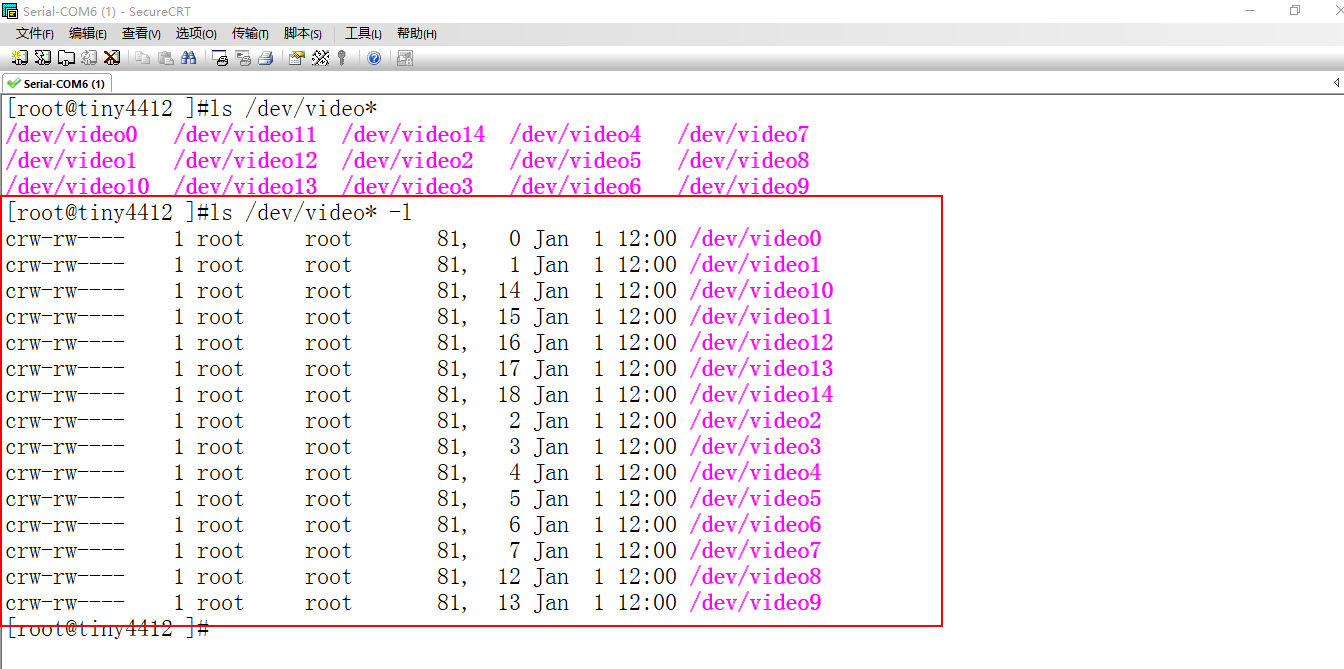

配置攝像頭采集隊列步驟:
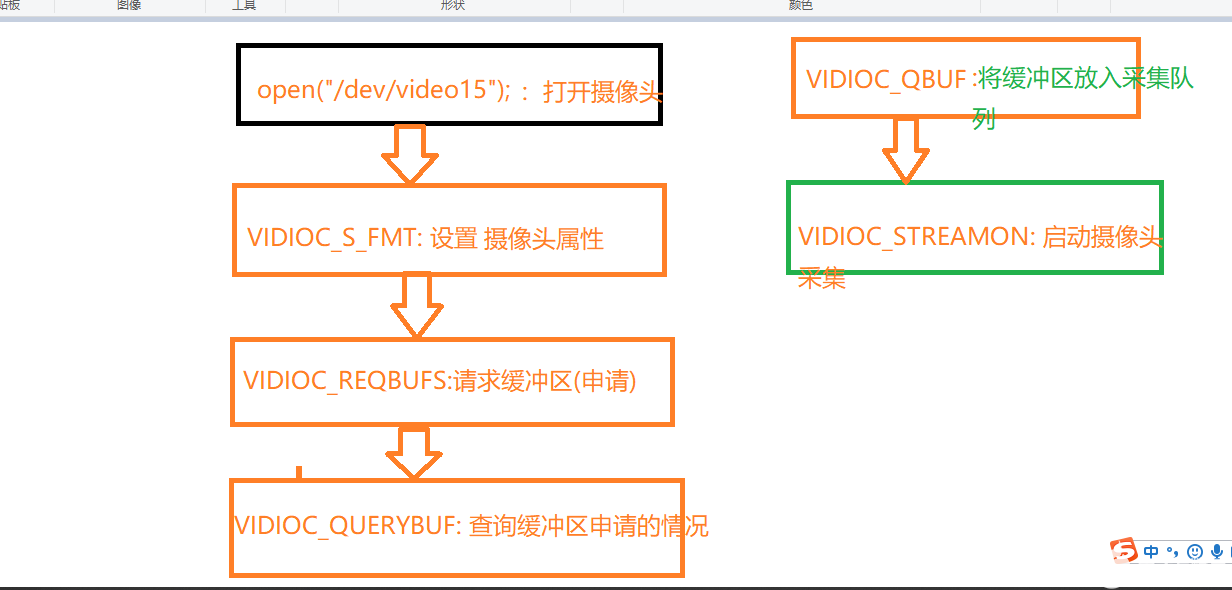
Mmap函數(shù)映射。
攝像頭代碼,讀取攝像頭畫面:
#include
#include
#include
#include
#include
#include
#include
#include
#include
#include
#include
#include
#include
#include
#include
#include
#include "framebuffer.h"
#define PWM_DEVICE "/dev/pwm" /*PWM方波設(shè)備文件*/
#define DISTANCE_DEVICE "/dev/tiny4412_distance" /*超聲波測距設(shè)備文件*/
#define UVC_VIDEO_DEVICE "/dev/video15" /*UVC攝像頭設(shè)備節(jié)點*/
#define GET_US_TIME 0x45612 /*獲取超聲波測量的距離: ioctl命令*/
#define PWM_IOCTL_SET_FREQ 1 /*控制PWM方波頻率: ioctl命令*/
#define PWM_IOCTL_STOP 0 /*停止PWM方波輸出: ioctl命令*/
int distance_fd; /*超聲波設(shè)備的文件描述符*/
int pwm_fd; /*PWM方波設(shè)備的文件描述符*/
int uvc_video_fd; /*UVC攝像頭設(shè)備文件描述符*/
int Image_Width; /*圖像的寬度*/
int Image_Height; /*圖像的高度*/
unsigned char *video_memaddr_buffer[4]; /*存放攝像頭映射到進(jìn)程空間的緩沖區(qū)地址*/
/*
函數(shù)功能: 用戶終止了進(jìn)程調(diào)用
*/
void exit_sighandler(int sig)
{
//停止PWM波形輸出,關(guān)閉蜂鳴器
ioctl(pwm_fd,PWM_IOCTL_STOP,0);
close(pwm_fd);
close(distance_fd);
exit(1);
}
/*
函數(shù)功能: 讀取超聲波數(shù)據(jù)的線程
*/
void *distance_Getpthread_func(void *dev)
{
/*1. 打開PWM方波驅(qū)動*/
pwm_fd=open(PWM_DEVICE,O_RDWR);
if(pwm_fd<0) //0 1 2
{
printf("%s 設(shè)備文件打開失敗\n",PWM_DEVICE);
/*退出線程*/
pthread_exit(NULL);
}
/*2. 打開超聲波測距設(shè)備*/
distance_fd=open(DISTANCE_DEVICE,O_RDWR);
if(distance_fd<0) //0 1 2
{
printf("%s 設(shè)備文件打開失敗\n",DISTANCE_DEVICE);
/*退出線程*/
pthread_exit(NULL);
}
/*3. 循環(huán)讀取超聲波測量的距離*/
struct pollfd fds;
fds.fd=distance_fd;
fds.events=POLLIN;
int data;
while(1)
{
poll(&fds,1,-1);
ioctl(distance_fd,GET_US_TIME,&data);
printf("距離(cm):%0.2f\n",data/58.0);
data=data/58;
if(data>200) /*200厘米: 安全區(qū)域*/
{
//停止PWM波形輸出,關(guān)閉蜂鳴器
ioctl(pwm_fd,PWM_IOCTL_STOP,0);
}
else if(data>100) /*100厘米: 警告區(qū)域*/
{
printf("警告區(qū)域!\n");
ioctl(pwm_fd,PWM_IOCTL_SET_FREQ,2);
}
else /*小于<100厘米: 危險區(qū)域*/
{
printf(" 危險區(qū)域!\n");
ioctl(pwm_fd,PWM_IOCTL_SET_FREQ,10);
}
//ioctl(pwm_fd,PWM_IOCTL_SET_FREQ,pwm_data);
/*倒車影像: 測距有3個檔位*/
}
}
/*
函數(shù)功能: UVC攝像頭初始化
返回值: 0表示成功
*/
int UVCvideoInit(void)
{
/*1. 打開攝像頭設(shè)備*/
uvc_video_fd=open(UVC_VIDEO_DEVICE,O_RDWR);
if(uvc_video_fd<0)
{
printf("%s 攝像頭設(shè)備打開失敗!\n",UVC_VIDEO_DEVICE);
return -1;
}
/*2. 設(shè)置攝像頭的屬性*/
struct v4l2_format format;
memset(&format,0,sizeof(struct v4l2_format));
format.type=V4L2_BUF_TYPE_VIDEO_CAPTURE; /*表示視頻捕獲設(shè)備*/
format.fmt.pix.width=800; /*預(yù)設(shè)的寬度*/
format.fmt.pix.height=480; /*預(yù)設(shè)的高度*/
format.fmt.pix.pixelformat=V4L2_PIX_FMT_YUYV; /*預(yù)設(shè)的格式*/
format.fmt.pix.field=V4L2_FIELD_ANY; /*系統(tǒng)自動設(shè)置: 幀屬性*/
if(ioctl(uvc_video_fd,VIDIOC_S_FMT,&format)) /*設(shè)置攝像頭的屬性*/
{
printf("攝像頭格式設(shè)置失敗!\n");
return -2;
}
Image_Width=format.fmt.pix.width;
Image_Height=format.fmt.pix.height;
printf("攝像頭實際輸出的圖像尺寸:x=%d,y=%d\n",format.fmt.pix.width,format.fmt.pix.height);
if(format.fmt.pix.pixelformat==V4L2_PIX_FMT_YUYV)
{
printf("當(dāng)前攝像頭支持YUV格式圖像輸出!\n");
}
else
{
printf("當(dāng)前攝像頭不支持YUV格式圖像輸出!\n");
return -3;
}
/*3. 請求緩沖區(qū): 申請攝像頭數(shù)據(jù)采集的緩沖區(qū)*/
struct v4l2_requestbuffers req_buff;
memset(&req_buff,0,sizeof(struct v4l2_requestbuffers));
req_buff.count=4; /*預(yù)設(shè)要申請4個緩沖區(qū)*/
req_buff.type=V4L2_BUF_TYPE_VIDEO_CAPTURE; /*視頻捕獲設(shè)備*/
req_buff.memory=V4L2_MEMORY_MMAP; /*支持mmap內(nèi)存映射*/
if(ioctl(uvc_video_fd,VIDIOC_REQBUFS,&req_buff)) /*申請緩沖區(qū)*/
{
printf("申請攝像頭數(shù)據(jù)采集的緩沖區(qū)失敗!\n");
return -4;
}
printf("攝像頭緩沖區(qū)申請的數(shù)量: %d\n",req_buff.count);
/*4. 獲取緩沖區(qū)的詳細(xì)信息: 地址,編號*/
struct v4l2_buffer buff_info;
memset(&buff_info,0,sizeof(struct v4l2_buffer));
int i;
for(i=0;i> 8;
g = (y - (88 * u) - (183 * v)) >> 8;
b = (y + (454 * u)) >> 8;
*(ptr++) = (r > 255) ? 255 : ((r < 0) ? 0 : r);
*(ptr++) = (g > 255) ? 255 : ((g < 0) ? 0 : g);
*(ptr++) = (b > 255) ? 255 : ((b < 0) ? 0 : b);
if(z++)
{
z = 0;
yuyv += 4;
}
}
}
int main(int argc,char **argv)
{
int data;
/*1. 注冊將要捕獲的信號*/
signal(SIGINT,exit_sighandler);
/*2. 創(chuàng)建線程: 采集超聲波測量的距離*/
pthread_t threadID;
pthread_create(&threadID,NULL,distance_Getpthread_func,NULL);
pthread_detach(threadID); //設(shè)置分離屬性
/*3. 初始化攝像頭*/
UVCvideoInit();
/*4. 初始化LCD屏*/
framebuffer_Device_init();
/*5. 循環(huán)采集攝像頭的數(shù)據(jù)*/
struct pollfd fds;
fds.fd=uvc_video_fd;
fds.events=POLLIN;
struct v4l2_buffer buff_info;
memset(&buff_info,0,sizeof(struct v4l2_buffer));
int index=0; /*表示當(dāng)前緩沖區(qū)的編號*/
unsigned char *rgb_buffer=NULL;
/*申請空間:存放轉(zhuǎn)換之后的RGB數(shù)據(jù)*/
rgb_buffer=malloc(Image_Width*Image_Height*3);
if(rgb_buffer==NULL)
{
printf("RGB轉(zhuǎn)換的緩沖區(qū)申請失敗!\n");
exit(0);
}
while(1)
{
/*1. 等待攝像頭采集數(shù)據(jù)*/
poll(&fds,1,-1);
/*2. 取出一幀數(shù)據(jù): 從采集隊列里面取出一個緩沖區(qū)*/
buff_info.type=V4L2_BUF_TYPE_VIDEO_CAPTURE; /*視頻捕獲設(shè)備*/
ioctl(uvc_video_fd,VIDIOC_DQBUF,&buff_info); /*從采集隊列取出緩沖區(qū)*/
index=buff_info.index;
//printf("采集數(shù)據(jù)的緩沖區(qū)的編號:%d\n",index);
/*3. 處理數(shù)據(jù): YUV轉(zhuǎn)RGB\顯示到LCD屏*/
//video_memaddr_buffer[index]; /*當(dāng)前存放數(shù)據(jù)的緩沖區(qū)地址*/
/*3.1 將YUV數(shù)據(jù)轉(zhuǎn)為RGB格式*/
yuv_to_rgb(video_memaddr_buffer[index],rgb_buffer,Image_Width,Image_Height);
/*3.2 將RGB數(shù)據(jù)實時刷新到LCD屏幕上*/
framebuffer_DisplayImages((800-Image_Width)/2,0,Image_Width,Image_Height,rgb_buffer);
/*4. 將緩沖區(qū)再次放入采集隊列*/
buff_info.memory=V4L2_MEMORY_MMAP; /*支持mmap內(nèi)存映射*/
buff_info.type=V4L2_BUF_TYPE_VIDEO_CAPTURE; /*視頻捕獲設(shè)備*/
buff_info.index=index; /*緩沖區(qū)的節(jié)點編號*/
ioctl(uvc_video_fd,VIDIOC_QBUF,&buff_info); /*根據(jù)節(jié)點編號將緩沖區(qū)放入隊列*/
}
return 0;
};i++)>
審核編輯:湯梓紅
-
嵌入式
+關(guān)注
關(guān)注
5068文章
19021瀏覽量
303319 -
Linux
+關(guān)注
關(guān)注
87文章
11230瀏覽量
208932 -
倒車影像
+關(guān)注
關(guān)注
1文章
42瀏覽量
5719
發(fā)布評論請先 登錄
相關(guān)推薦




 Linux應(yīng)用開發(fā)_倒車影像項目介紹
Linux應(yīng)用開發(fā)_倒車影像項目介紹
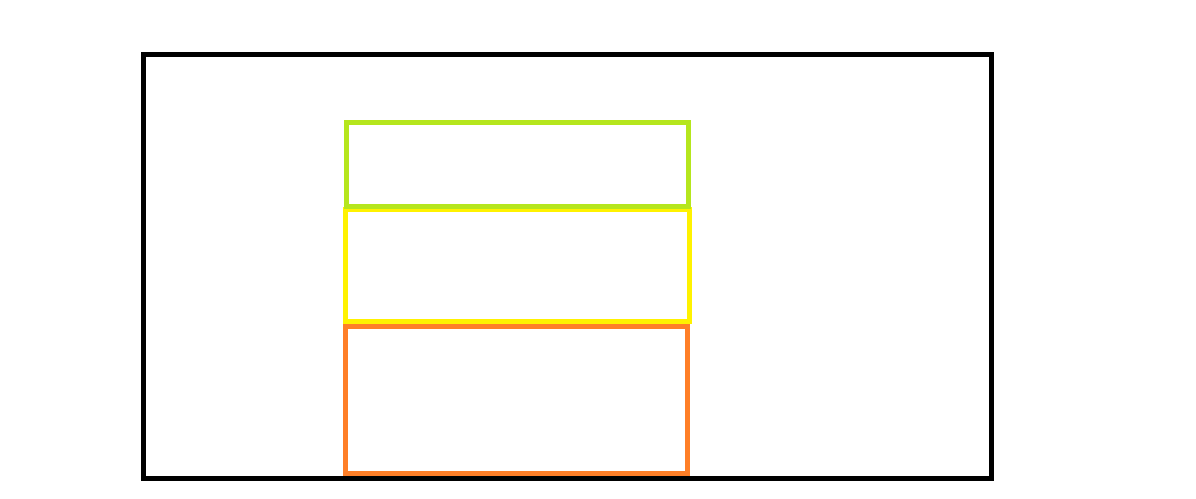
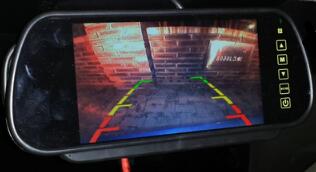










評論